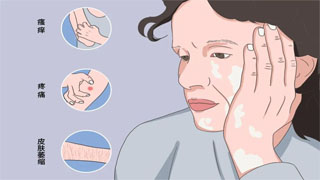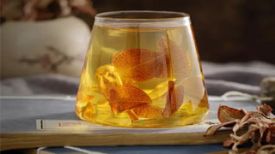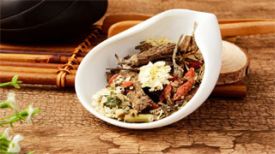
Vitiligo, also known as vitiligo, is a primary depigmentation of the skin characterized by white patches of varying sizes, shapes, and clear boundaries that can occur throughout the body. It often develops or worsens after psychological trauma and may also be related to autoimmune or genetic factors.
Huoxiang Zhengqi Liquid should be applied to the affected area daily with a small gauze dipped in the medicine solution, with slight force until the skin turns slightly red. It should be applied once in the morning, once in the afternoon, and once in the evening, and should be consistently applied over a long period of time.
Take 150 grams of fresh bone fragments or 50 grams of dried bone fragments, remove the hair, slice them, soak them in 600 milliliters of 75% ethanol, seal and soak for 10 days, then apply the cotton dipping solution to the affected area, apply 3-5 times a day, and generally take about a month to take effect.
Cut the purple eggplant into slices and apply the paste to the affected area of vitiligo for a few minutes at a time, changing several times a day (the more times the better): or rub the eggplant slices with paste for a longer time, the more times the paste is applied, and the better the effect. It is necessary to persist continuously.
Take a piece of fresh ginger, cut it into pieces, and apply the juiced side to the affected area. There is no limit to the time or frequency of application. The longer the application time, the more times it is applied, and the better the effect.
Ginger and eggplant stem: Mash the aged ginger and extract the juice, then dip the eggplant stem in the juice and apply it to the affected area.
Wash, mash, and twist the purslane to extract its juice. Add 2 grams of boric acid to every 100 milliliters to maintain a pH of 5.1. Bottle and set aside for long-term storage. Dip a cotton swab in the medicinal solution and apply it to the affected area 1-2 times a day (preferably once before bedtime), combined with sunbathing. Increase the time from 10 minutes per day to 1-2 hours per day, and pay attention to the occurrence of photosensitive dermatitis. Or take 20 grams of dried purslane (double the amount of fresh), 10 grams of brown sugar, and 7 milliliters of vinegar, mix and boil, filter and put into a colored bottle for later use.
100 grams of ginger, 150 grams of Sophora flavescens, and 100 milliliters of 50% ethanol. Grind Sophora flavescens into fine powder, mash it with ginger into a paste, and apply ethanol to the affected area three times a day. Generally, the treatment lasts for 3-6 weeks.
10 grams of musk garlic, finely ground, add garlic and mash into a paste, apply externally to the affected area. 2-3 times a day, usually treated for 15 days.
Vitiligo dietary therapy: Patients should eat more foods containing tyrosine and trace elements such as copper, zinc, etc., such as lean meat, beef, lamb, chicken, animal liver, fish, milk, miscellaneous grains, beans, peanuts, sesame, potatoes, winter bamboo shoots, radishes, eggplants, Chinese cabbage, fungus, seaweed, seaweed, etc., and eat less foods containing vitamin C, such as chili peppers, fresh dates, red fruits, citrus fruits, persimmons, strawberries, and other fruits. In addition, it is important to maintain emotional stability, maintain a cheerful mood, and receive moderate exposure to light.


